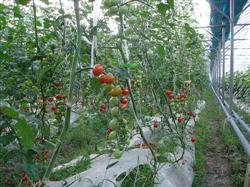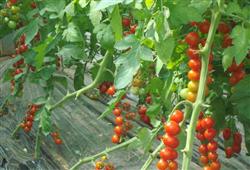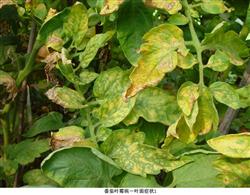Cultivation techniques of Cherry Tomato

Cherry tomatoes are nutritious and can be used as raw vegetables, high-grade vegetables and cooked food. High price, resistant to storage and transportation, long market supply period, easy to cultivate, the main varieties suitable for cultivation are cherry red, virgin, golden four seasons red, Huangyang pear and so on. The seedlings were raised in the greenhouse or small arch shed from late February to mid-March, planted in early April and harvested in early June. 3000 kg of rotten organic fertilizer per mu is used as base fertilizer, with a general row spacing of 60 cm to 70 cm and a plant spacing of 25 cm to prevent lodging, with a height of about 2 meters. Generally, single-pole pruning is adopted. After the first ear fruit is harvested, the leaves in the lower part of the plant begin to senescence, so they should be removed in time to facilitate ventilation and light transmission and prevent diseases. During the growth period, attention should be paid to the control of diseases and insect pests such as powdery mildew, leaf mildew, early blight, leaf miner and aphids. Cherry tomatoes should be harvested when they are fully ripe in order to ensure their inherent flavor and quality. Sepals should be preserved during harvest and picked from the detached stalks.
- Prev

Cultivation techniques of Cherry Tomato
First, seedling stage: sudden fall disease, blight disease, early blight disease. Spray: carbendazim, metalaxyl, chlorothalonil, alternately or mixed. At the same time, bring some insecticides, imidacloprid and cyhalothrin. Methyl thiophanate was sprayed once before transplanting. Second, the requirements of field transplanting: 1.2m soil moisture, 2200 plants per mu, one plant.
- Next

Control methods of cherry tomato leaf mold
Growing cherry tomatoes in greenhouse is often attacked by leaf mold, so vegetable farmers should pay attention to prevention and control. First, the symptoms mainly harm the leaves, and in severe cases, they also harm the stems, flowers and fruits. The leaves are infected with irregular or oval yellowish chlorotic spots on the leaf surface, the primary white mold layer in the leaf back disease, and the mold layer becomes grayish brown or grayish brown in the later stage.
Related
- Moge, come on! The staff of the peasant association in the producing area of cantaloupe were frightened when the crowd gathered.
- Causes and Solutions of low Fruit setting rate of Apple
- Symptoms and control measures of passion fruit virus disease
- Fruit growing lesson: how do apple orchards keep high yields?
- Can you build orchards in the mountains? What are the pros and cons?
- How to manage the coloring period of Crisson grape?
- This paper introduces the processing technology of two kinds of fig products.
- How much is a month for retired teachers in rural areas by 2020?
- How can strawberry planting increase sugar content? We should pay attention to management in many aspects.
- What are the cultivation techniques on how to improve the yield of golden fruit?

